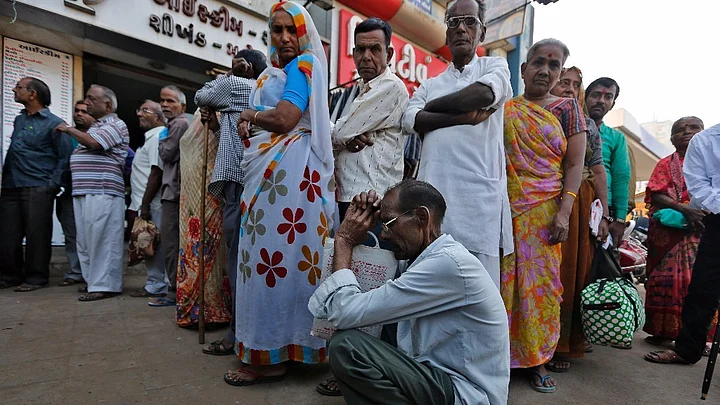“Hopefully, I will be able to withdraw cash tomorrow.”
Those were the last words of Kallol Roychoudhury, a 56-year-old state government employee who died while standing in an ATM queue near Bandel station in Hooghly district of West Bengal on 3 December. Roychoudhury was lying unattended for about 30 minutes after he collapsed. According to Ganesh Prasad, a tea seller near the ATM, people walked past him lying on the floor to withdraw money from the kiosk.
Also Read: Deaths After Demonetisation: Chaos Claims 18 Lives in Five Days
Prasad eventually took Roychoudhury to a hospital. But one of the implicit fallouts of demonetisation is a moral shift in India to an each-man-for-himself attitude.
After 8 November, a large part of the country finds themselves in a situation where survival in a cash-crunched society is a daily struggle; precariously staked on a spot in the ATM queue. Which leads to a dilemma: would you get out of an ATM line to help a dying man, knowing that you may lose the chance to withdraw money? Money which you need on an emergency basis to buy food, to feed your children, to survive?
Dying in an ATM Queue
Despite the term ‘demonetisation deaths’ becoming common, it would be incorrect to argue that deaths in an ATM queue are caused by the demonetisation policy. They might be linked to the currency ban; one major factor, but no direct cause-and-effect can be established. So, the focus of the dilemma shifts from “Why did a man die in an ATM queue?” to “Why did the others standing in line didn’t help?”
In Kerala, a 70-year-old farmer died while filling a withdrawal form at a bank near Papanasam.
M Subramanian was a long-time customer at the bank and had come on 4 December with his wife, when the incident took place. A bank official said that staffers and customers rushed to offer help, but in the video a steady stream of customers walk past Subramanian and his wife.
Roychoudhury’s family said he wanted cash to pay for his son’s school and he had tried to unsuccessfully withdraw money for two days. But Roychoudhury’s wasn’t the only ‘demonetisation death’ that week in West Bengal. A day before his death, 72-year-old Rabin Mukherjee and 80-year-old Viswadeb Naskar collapsed and died in North 24 Parganas district. In the same week, a 62-year-old pensioner died after suffering a heart attack in Aravali in Gujarat.
Ever since demonetisation has been announced on 8 November, there have been numerous reports of people dying in an ATM queue. On 14 November, 69-year-old Masukh Darji died in Limbdi in Gujarat while standing in an ATM queue. Again in the video, one can see a line snaking behind him.
On 24 November, an 84-year-old Piara Singh died of a heart attack while waiting in a line to withdraw money from the post office in Jabalpur in Ludhiana. In fact, in the first few days after demonetisation was announced, the chaos which ensued resulted in 18 deaths.
Meanwhile, activists have asked the government to establish a first-aid centre near ATMs to ensure that there aren’t more deaths. But when a government policy forces each individual to consider his or her self before others, of what help would a first-aid kit be?
(Sources: The Hindu)
(At The Quint, we question everything. Play an active role in shaping our journalism by becoming a member today.)
